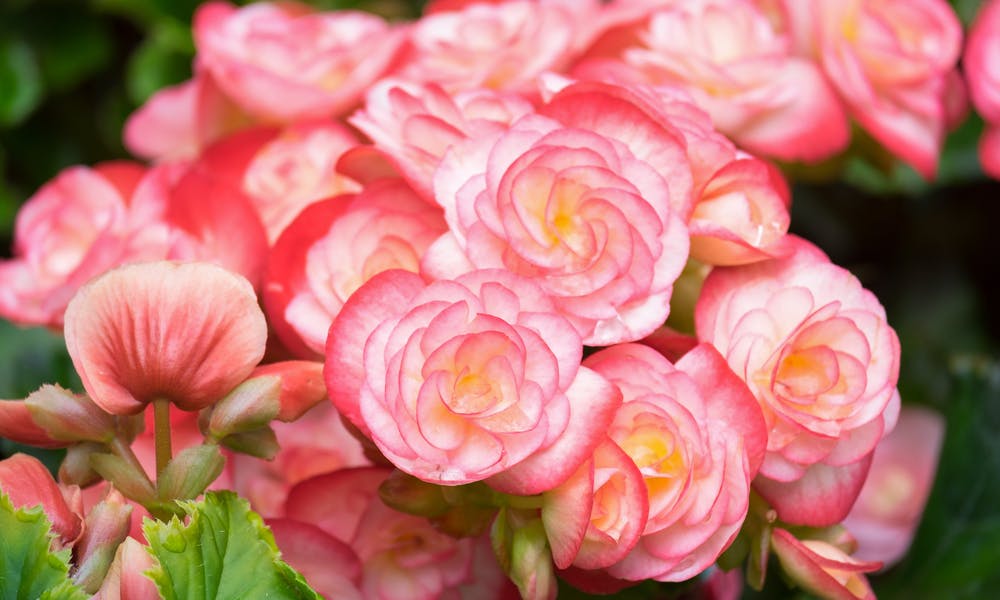MENU
The Captive World of Flowers Names

Over the ages, through discoveries and explorations, the name of many flowers has been derived from the person who discovered it, a scientist or adventurous botanist. Everything from the origin of a blossom’s name to its unique features and rich history is full of meaning and symbolism. The meaning of flowers guide is designed to unravel these hidden mysteries, discover these floral treasures and introduce you to an all-new language – the language of flowers.
We choose, intuitively, one flower rather than the other according to the mood or the occasion. Therefore, we surprise someone with a bouquet of vivid yellow flowers to cheer them up or proclaim our ardent passion with dozen of red roses.
Flowers’ names are a completely new captive world. Each flower has a meaning that comes from its name. Let us discover some of those names!
In this article, we discuss several points such as:
* What Is the History Behind the Name of the Begonia Flower?
* Who Discovered the Dahlia Flower?
* Where Does the Frangipani Tree Name Come From?
* What Are Some of the Most Famous Flowers Names given to Babies?
What Is the History Behind the Name of the Begonia Flower?
With more than 900 varieties listed, this robust and colorful tubular plant is named in honor of Michel Begon, an administrator of King Louis XIV. In 1688, he set up a botanical mission to the Antilles but was not the flower’s discoverer. It was a plant scientist, Father Charles Plumier, who returned it and named it after his great benefactor and plant collector.
The begonia is the symbol of caution, love, as well as sensual desire. In the Japanese market, begonia has some positive qualities. It can be found in mangas. It means caring for others and loves unconditionally. Some Hindu beliefs see this flower with its many overlapping petals as a sign of sensual desire. In both India and the Himalayas, the begonia is seen as the flower connected to the solar plexus and root plexus chakras, the two vital energy pillars that can bring calm and peace to life.
Who Discovered the Dahlia Flower?
Originally native from Mexico, the dahlia was found in the 16th century but only reached Europe via the Spanish mainland in the year 1789 thanks to Vincente Cervantes. As the director of the garden in the city of Mexico, he addressed it to Father Antonio Cavanilles, a botanist. They named this flower in memory of the botanist and pupil of Carl Von Linné, Anders Dahl, who died that same year in 1789. It is not until 1802, through the French Ambassador in Madrid, that the first dahlia reached France.
When you purchase dahlias, you are not only acquiring nice flowers. It is a sign of lush beauty, strength and the giving of the whole person. Pick the right color and the right form and your message can be more unique.
Where Does the Frangipani Tree Name Come From?
This sophisticated tropical bloom is best remembered for its charming scent. Originally from Middle America, you can equally find it in Asia or on the Hawaiian Islands, growing in great abundance. It was initially called “Plumeria” in the honor of renowned 17th century French botanist Charles Plumier.
Some say that the name “Frangipani” comes from a 12th-century story about a noble Italian man named Frangipani who designed a very popular perfume and that, 400 years later in the Caribbean, the European explorers discovered this tree with blossoms that had a scent similar to the Italian perfume. These explorers, therefore, decided to name the tree “Frangipani.”
The frangipani tree is the strongest in the South Pacific and is one of the symbols of the tropical heaven. Its flowers are not only pretty, but the fragrance they release is captivating. Yet in certain lands, this tree is badly regarded.
What Are Some of the Most Famous Flowers Names given to Babies?
Flowers have traditionally been a good inspiration for naming your baby. Here is a list of the most popular ones.
Almost 50,000 individuals in France carry the name “Rose”; it is among the top 50 names in France. In antiquity, the rose was Aphrodite’s flower, the deity of love and beauty. This name started to be famous in the 5th century. Others opt for its derivations: Roselle, Rosaura, Rosaria, Rosine, and Rosy… Arrangements such as Lily-Rose, Lola-Rose or Emma-Rose are also often used.
Narcissus is probably the only male flowery name! In the Greek legend, Narcissus was a handsome ephebe. He once saw the mirroring of his face in a water fountain and fell in love with his appearance. He passed away leaning over his own image and was made into a bloom. Narcissus is seen as an independent man with a strong sense of knowledge.
Perhaps you have wondered why the rose or the hydrangea is called that. While most of the species take their names from the etymology that goes back to very ancient times, some others, found as early as the 18th century, generally carry the surname of the person who made them famous.
Flowers are the best way to convey how we feel. Love, gratitude, high-esteem…each of them has meaning. The name of the flower usually takes a big part in the meaning and the symbol that the bloom sends.
If flowers communicate our emotions much better than words, it is because they accompanied people’s lives since ancient times. According to the occasion, each has its own voice, influenced by its own history, its unique seasonality, and its own name. Flowers are a captive world and their names are magnificent land.

